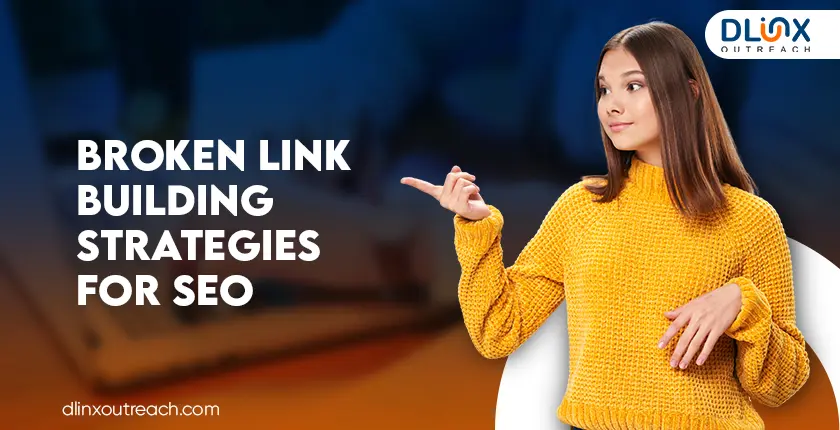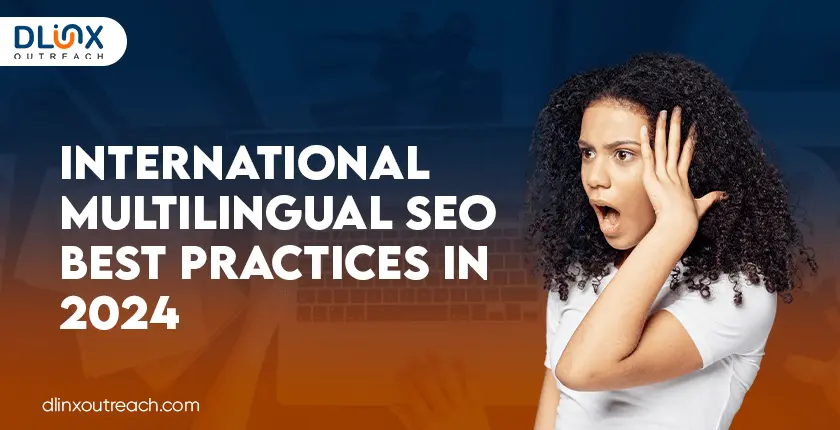In the present era, where everything is digitalized, making a digital platform for your online visibility has become compulsory. Your website is your first interface with your potential customers.
If your interface is interactive and responsive, it will convert a potential customer into a real customer; if it is slow, clumsy, and inactive, you will lose your future customers.
Website is necessary whether you are running a local business or want to convert from local to global. About 70% of businesses worldwide have a website, which shows how necessary a website is for a business.
So, if your website is not good, it will ruin your business, as statistics suggest that it takes about half a second to make an opinion about a website.
So, your website should be striking to capture the attention of visitors. Following are some of the key aspects of a website that must be optimized for better online visibility and a high conversion rate.
1. Mesmerizing Theme

Your theme dictates your taste. So try to incorporate the theme, which is interactive and has a good color contrast. Your theme should compliment your brand.
Statistics suggest that three quarters of visitors form their opinion about a brand by just looking at the website’s design. So, your theme must be charming and hypnotic to lure the customers.
At the same time, the theme should be light and not take time to load, as the higher the loading time, the lower your ranking will be.
2. Good Page Speed
Page speed dictates a good user experience, as a better user experience can generate a 400% higher conversion rate.
If your page speed is small, then there are chances that you’re your visitors will leave your site. In today’s world, anything larger than 2 seconds is considered a high loading time.
Try to keep your theme and design light, use fewer plugins and widgets, avoid flashy animations, keep your overhead landing image light, apply CDN, and use a good and fast server, as these things will increase your page speed.
3. Intuitive Layout
The layout tells all about your website. So, the layout should be simple and intuitive to capture visitors’ attention. It should provide the necessary information that visitors can skim through.
Statistics suggest that 38% of visitors will leave your platform if your layout is not attractive. So, work on your layout to perfection for a better user experience.
4. Friendly URLs
Your URLs should be SEO-friendly, short, memorable and easily shareable. Your URL is the first thing that Google crawls, so it should be relevant to your niche and should not have characters, dates and numbers, as they are difficult to index.
Use the “.com” top-level domain, apply HTTPS, and avoid using underscore and your blog’s full title in the URL. Use hyphens, keywords, lowercase and geolocation (for government and educational sites) for better understanding.
5. Typography

Your font size and style should be readable and in line with the design and theme of your website. These fonts enhance the user experience, which, in turn, increases your ranking. Try incorporating fonts like Arial and Times New Roman, which are easily readable and are also considered web-safe.
6. Easy to Navigate
Navigation settling at your platform should be placed properly for a better user experience. It increases the retention time of the visitors and facilitates visitors to read more of your content.
Try to incorporate a good layout and move “forward” and “backward” buttons, sidebars, important page links and “Home Page” buttons at the proper locations.
This will help the visitor to navigate through your important pages easily. It will also reduce your bounce rate and increase your ranking in SERPs.
7. Strict Security Protocols
People are very conscious about their personal data leakage. So, you must take some serious security measures to ensure their data remains secure.
Use SSL certificates to secure the communication between the site and the user. Furthermore, USE HTTPS protocols that encrypt all communication between a user and your website.
In addition to the user experience, Google also gives a high value to the secured websites in its ranking. Statistics suggest that Half of the websites that rank higher in SERPs use the HTTPS protocol.
8. Great Content
Content is the key to your success. If you have not provided great content, all other features would not be effective.
Create informative, relevant, updated, keyword-oriented, and SEO-optimized content. Your content should be validated with the relevant statistics, images and videos.
Do not try to copy-paste your content or use the plagiarized content, as Google takes very strict measures to detect such content and penalize them.
9. Keywords Oriented
Google indexes the website and its pages based on the keywords. So, incorporate relevant keywords in your content for proper indexing.
Keywords in the intent of the Google search can easily be found using different SEO tools. Try to use these keywords in your content, but do not stuff them, as it will negatively impact your ranking.
10. Quality Backlinks

Although backlinks are not directly related to your website, you should optimize your website so that people like to provide a link.
Backlink is one of the most important factors in the ranking calculations. More authoritative backlinks mean higher ranking. That’s why whole SEO is mainly focused on getting as many backlinks as possible.
These backlinks should come from authoritative and relevant domains. Both the quality and quantity of backlinks matter as far as your position in SERPs is concerned.
One can get links naturally and organically, which is time-consuming, but you can also buy backlinks, which are illegal as per Google guidelines. So, avoid mistakes in buying links to escape from being penalized.
11. Proper Structure
Heading and subheadings make your content more readable and easy to skim. It also helps to categorize your content for better understanding and user experience. Ensure that your headings are properly structured and tagged as per the flow of your content.
Writing should be short and meaningful, and long stories should be avoided. Use citations whenever referring to other content and write in small paragraphs for more impact. Incorporate the internal backlinks structure for longer retention time.
The picture below is from the New York Times. It shows the beautifully crafted structure of the home page, which includes HD pictures, proper font size and style and well-placed news at different locations.

12. Quality Visuals
Images and videos are part of every site. Try to incorporate mesmerizing pictures and videos that are relevant and informative.
It is also pertinent to mention that these visuals make your website a bit heavy. So, optimize them so that it does not slow down your platform. Stats suggest that 40% of people will leave a website if images are taking too long to load.
13. Contact Us Details
Contact information is the requirement of each platform. Ensure this information is part of your main menu and the home page. You should add your email, phone number, WhatsApp and postal address for better communication.
Make sure these details are accurate and active. The response time should not be long to resolve the grievance of your visitors. Try to incorporate the feedback from the users on your website, if feasible.
The picture below is from AliExpress and it shows the contact details of every department. Since it is one of the biggest online stores around the globe, so they have provided every detail on this page.

14. Reviews and Testimonies
Reviews and testimonies help the visitor in the decision-making. Reviews and testimonies show the confidence of your previous customers. Stats suggest that around 93% of people read reviews before making a purchase decision.
Try to add them to your website at the relevant places. Also, incorporate the star rating on your platform for each product for quick purchase decisions.
The picture below shows the review of an Addidas product. It shows both the star rating and the customer comments.

15. Audience Oriented
Make your website as per your targeted audience. For example, it will not be catchy if you are selling a women’s product and using a male-oriented theme and color scheme.
Furthermore, try to create content that is also in accordance with your targeted audience’s cultural, ethnic and religious inclinations.
16. CTA – Call to Actions Button

Call-to-action buttons are those links that direct you to the final purchase. Typical examples of these buttons are “Claim deal,” “Buy Now,” “Checkout,” “Back to Purchase,” and many more.
These buttons should be placed on every listing of your products. Use them for further purchases and keep people engaged. It also facilitates visitors’ navigating easily and purchasing quickly.
17. Redirects
Add redirects in your websites for the broken and deleted pages. These redirects are part of the better user experience, as you do not want your visitor to land on the page displaying an error message.
18. Efficient Meta Tagging
Meta tagging is the HTML coding to inform or signal the search engine about a heading and its content. This meta tagging also helps the search engine to know the heading and subheading. It also provides information on follow and nofollow links.
These follow and nofollow links signal the search engine crawlers to consider and do not consider a particular content, respectively, in the SERPs ranking. This is a simple way to avoid spammy and malicious links that could deteriorate your reputation and cause penalties.
19. Social Media Leads
Social media is the king of the digital world, and its size is estimated to be more than $70 billion. Social media is an easy way to interact with people, and it helps spread information more quickly.
Your website should have the buttons that lead you to your social media pages. These pages should be active and provide the latest information about your brand and its activities. These pages also help to generate traffic to your website, enhancing your ranking.
The picture below is from the website of the famous American store 7-Eleven, which shows the lead to all the famous social media pages.

20. Brand Messaging
Your brand slogan and logo should be portrayed on your website’s prime location for better visibility. Your website’s color scheme and fonts should compliment your logo’s colors and slogan font style.
Try to design a stylish logo that attracts the visitor’s attention. Furthermore, make a short, catchy and memorable slogan.
21. Sitemap
A sitemap is a file that provides the information of all of your pages to the Google bots for proper and quick indexing. Although a sitemap is not mandatory, it helps to find the contents of a website in a single place.
The sitemap can be easily found by using the following URLs.
https://sample.com/sitemap.xml
If it does not work, you may also want to try;
https://writemaps.com/sitemap_index.xml
The sitemap of our website can be found by typing the following text in the address bar:
https://dlinxoutreach.com/sitemap_index.xml
22. Good Content Management System
The content management system is the platform where you can host your Websites like WordPress, Wix and Joomla. Try to use that CMS, which offers good services. These services include good plugins and widgets, better server speed, and different themes and design choices.
Use that CMS, which has high-speed machines for their server, uses less HTML coding, and requires fewer plugins and widgets for optimization and implementation of different choices.
23. Home Page Design
Your home page is the first thing visitors see, so make it impressive and leave a lasting impression. The home page should have all the necessary information, like the logo and slogan of your brand.
Keep all the main hyperlinks, contact information and leads to the social media on the home page for easy accessibility. Use minimal text on the home page and it should provide the basic information of your niche, products and services.
24. Mobile Friendly

More than 50% of the traffic on a website comes from mobile users. So, make sure that your website opens seamlessly on mobile devices.
Google also considers mobile-friendliness as one of the factors in their ranking. Make sure your images open and videos play efficiently on mobile devices.
25. Keep Changing
People get bored by repeatedly watching the same things, so occasionally, change your website to keep your customers engaged. Try to adapt things to the evolution of technology and the IT industry.
Conclusions
A website is essential for every business and should have all the information a visitor wants. Following are some of the most important things about a website.
- It should have an interactive and mesmerizing theme and design.
- Its menu and layout should be clear, and it should help users navigate the website.
- Its URL should be short, catchy and keyword-oriented.
- Create awesome content that should be keyword-oriented.
- Try to implement the on-page SEO for better ranking in SERPs.
- Your website should be mobile-friendly and audience-oriented.
- Incorporate the sitemap, reviews, redirect and meta-tagging.
- Add your logo and slogan at the prime position of your home page.
- Lastly, make your website mobile-friendly and ready to adapt to the evolution of technology.
The picture below is of the Nike‘s website. It is a typical example of an astonishing website. It has an awesome layout with quality pictures. The menu is right at the top, along with the logo at the left corner and the slogan in the URL. It has the minimum text on the home page but has the necessary information for each type of visitor.

About Dlinx Outreach
Dlinx Outreach is an SEO agency known for optimizing your website for better ranking. Our agency has expertise in every attribute of SEO and it can formulate customized strategies for your website that earn you high ratings, authority and ranking.
Our agency works for on- and off-page SEO, web design, link-building, competitor analysis, page speed, and more to improve your ranking in SERPS. Our analysis teams also audit your website for better optimization and utilization.
Furthermore, our team is well-versed in the recent trends and SEO tools that could help you earn unbeatable publicity, visibility, traffic, popularity, and long-term business. Feel free to contact us for further information.
Frequently Asked Questions
Why a website is necessary for a business.
We live in the digital world, and the survival of a business depends on your digital appearance. A good website can boost your business, whereas a bad website can ruin a business.
Why content is important for a website?
Content is king and if your content is relevant and mesmerizing, it will give you large traffic, which can give you good business.
How important is security protocol for a website?
Safety and security matter to visitors and Google, so adopt SSL certificates and HTTPS security protocols for better protection.
How important is the brand messaging?
Your logo and slogans are the talk of the town. So, please place them in a prominent position on your website for better visibility.
Does Dlinx help you optimize your website SEO?
Dlinx is an SEO agency that works on all SEO parameters of a website that could enhance your ranking.
Related Posts:







